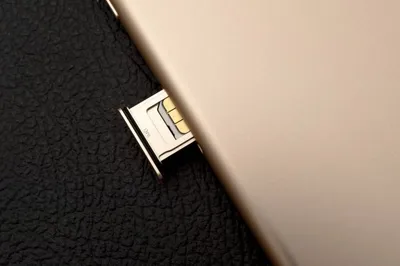When The Bars Are High But The Signal Is Low
What’s really going on with your mobile phone signal?
You know how it is, you’re out and about, your phone rings, you look down and you’ve got an incoming WhatsApp video call. Quick! Check your hair, check your teeth and check your signal strength before accepting – all looks fine – you’ve got 4 bars on 4G!
But how many times do you answer the call and it’s frozen with the person on the other end sounding like a malfunctioning robot – what’s going on?
Your bars are not to be believed.
The bar indicators on your phone are a rough guess. There’s no industry standard, they do indicate strength, but it’s based on the manufacturer’s algorithm.
It’s a bit like that dish you love and cook all the time – you started off following the recipe to the letter, but now you kind of know what you’re doing – you don’t need to be so specific right?
Wrong.
If you want to get the best result – you need to get accurate.
How can you get an accurate signal reading then?
The best way to measure your mobile signal is by looking at decibels (dB). More specifically decibel milliwatts (dBm).
With Android phones you can access this information via your settings.
The bad news is – the iPhone no longer has the ability to view dBm levels within settings.
And the App Store doesn’t offer any apps designed to show you live dBm values.
Therefore, there is no perfectly accurate way to find your signal strength with an iPhone unless you go into field test mode – more on that later.
There are data speed apps which can tell you your upload and download speed and websites such as Ofcom and signal checker will give you an overview of mobile coverage in your area.
But sadly, there’s no magic signal booster app to stop the malfunctioning robot effect on the end of your phone.
What is good signal?
The mobile mast emits a signal. As the signal travels away from the mast, it degrades or weakens. So, it stands to reason the closer you are to the mast, the stronger your signal will be.
Mobile phone signals are measured in dB. They’re AM/FM radio waves. So, they’re great at travelling long distances but are easily interrupted by buildings, trees, hills etc, which leads to bad reception.
The strength of those waves in any particular location, outside your house, in your office, at the supermarket, are measured in dBm, and these are always displayed as negative numbers.
How much strength is enough?
All cellular devices operate within this strength range: -50 dBm to -120 dBm.
-50dBm is full strength so would be considered the equivalent of full bars. While -120dBm is pretty much no service at all – a not-spot.
Here’s the signal ranges in more detail:
- -50 to -79 dBm = great signal, full bars (4 to 5 bars).
- -80 to -89 dBm = good signal (3 to 4 bars).
- -90 to -99 dBm = average signal (2 to 3 bars).
- -100 to -109 dBm = poor signal (1 to 2 bars).
- -110 to -120 dBm = very poor signal or not-spot (0 to 1 bar).
dBm readings are not subjective – unlike the bar display method, they don’t fluctuate.
How do you find out your dBm?
It can vary between manufacturers but if you’re on an Android phone, you can go to:
- Settings
- System
- About Phone
- Status
On an iPhone, you go into field test mode:
- Turn off your WIFI
- Dial *3001#12345#*
- Press Call
- Choose menu view on the right
- Serving Cell Meas
- rsrp0 – it’s the number next to this field.
Now that you know your signal’s dBm, what’s next?
That instinct you get when you’re having bad signal – to wave your phone around? – Do that, but all around your house, whilst following the instructions above. No really –
now that you know how to find out your dBm, walk around your house (or wherever you’re having trouble) – and find the place where your signal is strongest.
If having bad signal just isn’t an option, if it’s affecting your business and there has to be a better way other than hanging out the first-floor window that points north then there’s good news.

We can help you
At Signal Solutions, we use Nextivity Cel-Fi technology to solve problems like this one for good.
We provide high quality signal in areas where coverage is poor or non-existent. We’ll install a receiver at your home or workplace and pop a booster somewhere where mobile signal is super strong, so you can enjoy a great mobile connection every minute of every day.
Our boosters are:
- 100% legal to use, fully compliant with Ofcom licensing laws
- Unconditionally network safe
- Accepted by UK regulators
- Compatible with every mobile network
Give us a call on 0203 823 7365 or drop a message in the form below if you’d like to know more.